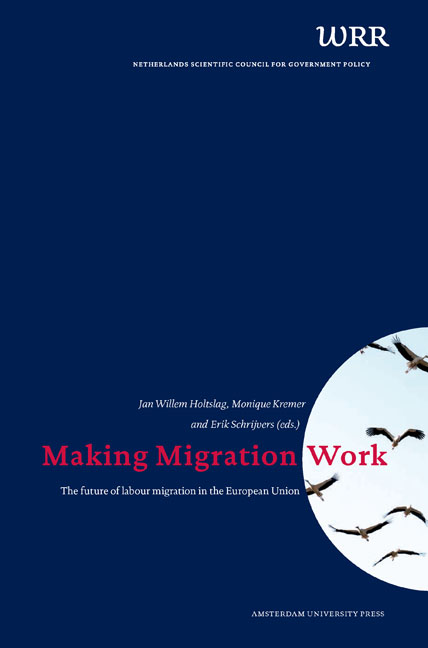Book contents
- Frontmatter
- Contents
- Introduction
- Acknowledgements
- 1 How to Make Migration Work
- 2 The Global and European Neighbourhood Migration Systems: Trends, Policy Choices, Governance Challenges and a Look Ahead
- 3 Satisfying Labour Needs in an Ageing Society
- 4 Migrant Workers: Inevitability or Policy Choice?
- 5 Intra-EU Labour Mobility after Eastern Enlargement and During the Crisis: Main Trends and Controversies
- 6 Labour Migration From Central and Eastern Europe and the Implications for Integration Policy
- About the Authors
Introduction
Published online by Cambridge University Press: 23 June 2021
- Frontmatter
- Contents
- Introduction
- Acknowledgements
- 1 How to Make Migration Work
- 2 The Global and European Neighbourhood Migration Systems: Trends, Policy Choices, Governance Challenges and a Look Ahead
- 3 Satisfying Labour Needs in an Ageing Society
- 4 Migrant Workers: Inevitability or Policy Choice?
- 5 Intra-EU Labour Mobility after Eastern Enlargement and During the Crisis: Main Trends and Controversies
- 6 Labour Migration From Central and Eastern Europe and the Implications for Integration Policy
- About the Authors
Summary
The complexion of labour migration in the European Union (EU) has altered in recent years. Not only has there been a shift in the length of time labour migrants spend abroad, but the nature, scale and direction of the migration flows have also changed dramatically. The enlargements of the EU in 2004 and 2007 were influential in this respect. A growing economy and large wage gaps encouraged a large stream of workers to leave the new Member States for the old. The EU's open internal borders made it easy for them to return home or to move on to another Member State. This publication considers what this means for the future of labour migration and how policy should address this issue. For example, one possible implication is that the integration of newcomers will need to be viewed in a different light; unlike in the past, not all migrants are likely to remain in their destination country.
Another reason to consider the future of labour migration in the EU can be found in various demographic trends in the Member States, including the Netherlands. With their populations ageing and their birth rates declining, the labour force in these countries is also shrinking – a trend that is expected to lead to many new challenges, for example the affordability of the social welfare system and labour shortages when the baby boom generation retires. Some sectors are already feeling the pinch of these shortages. Labour migration – particularly of workers from outside the European Union – is thought to be one way to alleviate these shortages. But is it a realistic option?
The third reason concerns the sweeping changes that have taken place in employment relations since the labour migrant flows of the 1960s and 1970s, with flexible employment practices being one of the most significant. Labour migration and flexible employment practices have seemingly entered into a marriage of convenience: the sectors that have the most flexible employment contracts are also those that employ the most labour migrants. The EU's policy of economic liberalisation seems to be accelerating the transition to flexible employment practices. One possible consequence is that national markets will not only welcome more foreign companies but also more new migrants.
- Type
- Chapter
- Information
- Making Migration WorkThe Future of Labour Migration in the European Union, pp. 7 - 10Publisher: Amsterdam University PressPrint publication year: 2013

